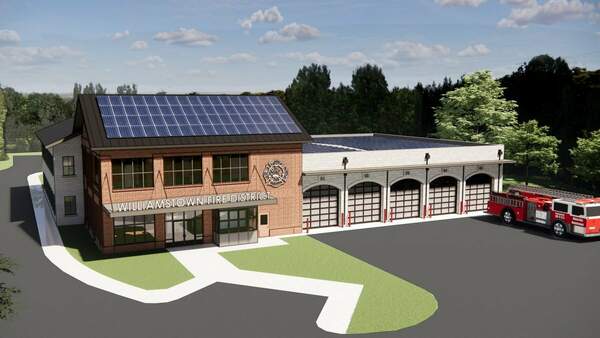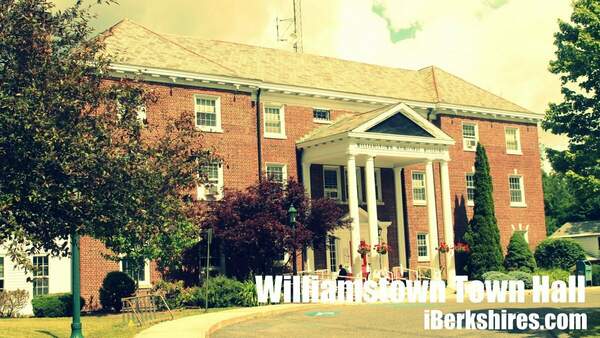FAQs About Williamstown's FEMA Grant
|
The Spruces Mobile Home Park flooded during Tropical Storm Irene. |
WILLIAMSTOWN, Mass. — How the town plans to spend the proceeds of a $6 million federal grant is very much a matter for debate.
But there is little doubt that the town and co-applicant Morgan Management will accept more than $6 million from the Federal Emergency Management Agency's Hazard Mitigation Grant Program.
The distribution of that money is complicated, and there are a few aspects of the program that town officials will continue to learn in the months ahead.
Over the last few weeks — in public meetings and in interviews with iBerkshires.com — Town Manager Peter Fohlin has been able to shed some light on much of the process, dispelling a few misconceptions along the way.
QUESTION: Just where does all this money come from?
ANSWER: The HGMP is designed to address property that "has been subjected to, or is in danger of, repetitive damage," according to FEMA's website. The program is funded at a rate of 15 percent of the total disaster grants awarded to a state by FEMA for the disaster covered - in this case, Tropical Storm Irene.
"The purpose is to compensate owners for losses and move them out of harm's way," said Fohlin.
In this case, the people in "harm's way" are the 66 remaining occupants at the Spruces Mobile Home Park, a site of repeated flooding over the years with the most severe coming in the summer of 2011 during Irene.
HMGP funds can be used either to rectify problems (i.e. elevating flood-prone structures) or removal of housing. The town's application approved by FEMA reads, in part: "Flood proofing by elevating mobile homes is impractical due to the senior population of the park and the limited space available for the required HP ramps. Flood proofing by constructed berm is unlikely to be permitted. Both alternatives have significant maintenance burdens."
Of the approximately $7 million in HMGP money coming to Massachusetts from this disaster, $6.13 million are coming to Williamstown.
QUESTION: Whose money is it?
ANSWER: Although the town authored the grant application, it did so on behalf of the landowner, Morgan Management, and the park's residents.
The town's partnership with Morgan Management on the grant application is part of the settlement of litigation against the town by the Rochester, N.Y.,-based developer.
It is common to talk about the town "receiving the grant," but the actual receipients of money are the landowner and the residents, who are in line to receive federal relocation money.
"The money goes through (the Massachusetts Emergency Management Agency) and the town to Morgan and the residents," Fohlin said.
The park residents will receive up to $22,500 per household, or up to $1.485 million.
"The remaining $4.645 million belongs to Morgan," Fohlin said. "It is compensation to Morgan Management for the loss of its property, and it is compensation so they can clean up the property and leave it virgin property when they leave."
QUESTION: Then how does the town get anything?
ANSWER: "The way I approached (Morgan) was to ask a simple question: How much money do you want to get out of town — no Conservation Commission, no cleanup, no Board of Selectmen, etc.?" Fohlin said of the conversation he had with Morgan Management before applying for the grant. "The answer they came back with was $600,000.
"So instead of $4.645 million, they agreed to accept $600,000. ... That money goes to a mortgage company in Oklahoma that owns the note."
QUESTION: So the town gets more than $4 million to spend however it wants?
ANSWER: No. Along with the $600,000, the town receives the 115-acre park, which includes about 37 acres that once accommodated 225 mobile homes, a three-unit apartment building, swimming pool and recreation building.
With the land comes the obligation to remove the existing structures and concrete pads and whatever mobile homes are left.
QUESTION: I thought the residents were responsible for removing the mobile homes.
ANSWER: They are, but a number of homes have been abandoned, and the town, as landowner, will be responsible for their removal.
The 66 current residents likely will use a portion of the relocation funds to pay for the removal of their homes.
"There are a few former tenants who continue to responsibly chip away at demolition and disposal, as they are legally obligated to do," Fohlin said.
In all, there 71 uninhabitable mobile homes in varying states of dismantlement at the park, along with the 66 currently occupied homes.
QUESTION: Could the town sue the owners who abandoned their mobile homes?
ANSWER: "If we can find 'em," Fohlin said. "Let me put it this way: If they left town, they best not return."
QUESTION: I keep hearing people refer to 65 current residents. Is it 65 or 66?
ANSWER: "When we submitted the application, there were 65 houses with valid certficates of occupancy," Fohlin said. "Subsequently, a 66th C.O. was issued."
QUESTION: When will the residents start getting their checks once the the grant is accepted?
ANSWER: "We are not into the program deep enough to know that kind of detail," Fohlin said.
QUESTION: What about the residents who already vacated the park? What do they get out of this grant?
ANSWER: Only residents who will be relocated by the project (i.e. the 66 current residences) are covered by the grant. Some of the residents who left the park immediately after Irene received other compensation from FEMA.
"FEMA has not and will not discuss individual cases (of previously departed residents) with me," Fohlin said. "That information is confidential.
"I know that there are residents who have left who received the maximum, $30,200, in Individual Assistance and some who have received less. Some residents have told me they did not receive anything. I can't speak to that.
"They're two totally different programs: the FEMA Individual Assistance Disaster Program and the Uniform Relocation Act."
Tags: FAQ, FEMA, Irene, Spruces,

.jpg)
 WILLIAMSTOWN, Mass. — The Prudential Committee on Wednesday signed off on more than $1 million in cost cutting measures for the planned Main Street fire station.
WILLIAMSTOWN, Mass. — The Prudential Committee on Wednesday signed off on more than $1 million in cost cutting measures for the planned Main Street fire station.













